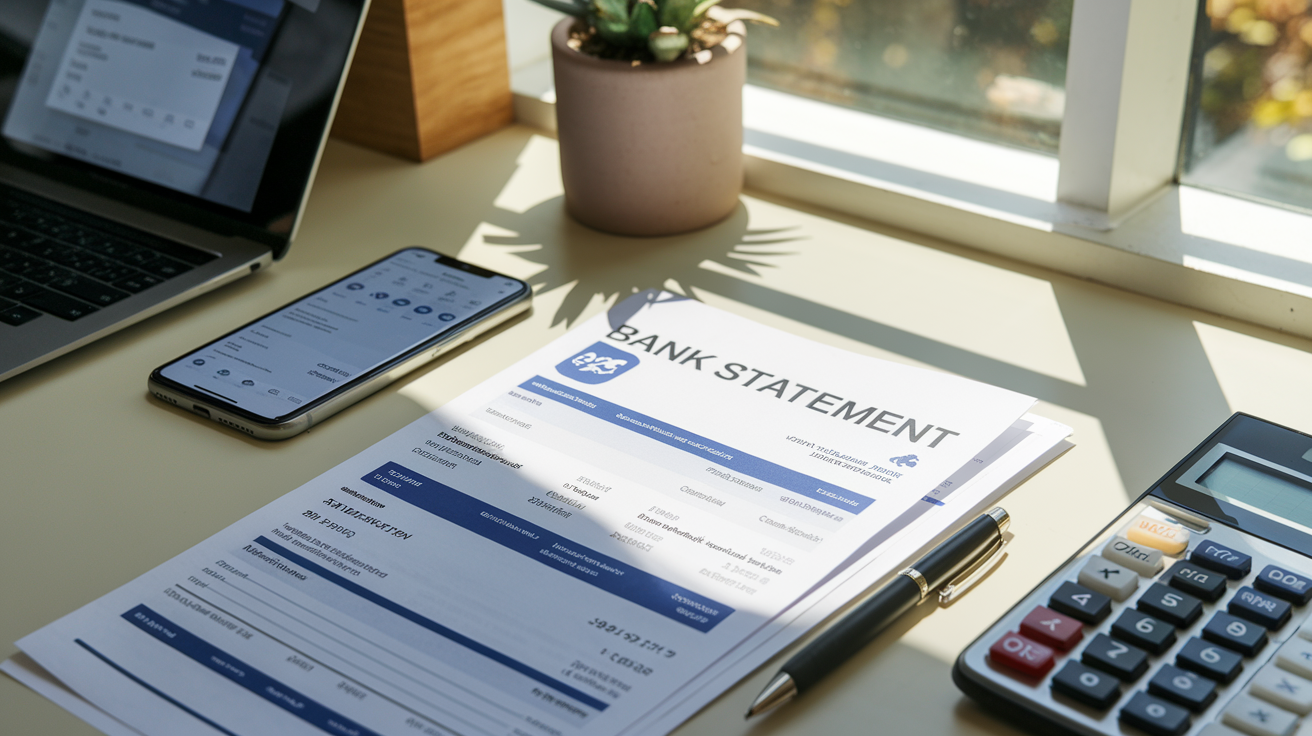Why You Might Need Old Bank Statements
Have you ever found yourself in a situation where you desperately need an old bank statement, only to realize your Chase account has been closed? Whether it’s for a loan application, rental agreement, or employment verification, accessing past financial records can be crucial. Don’t worry – you’re not alone in this predicament, and there are solutions available.
ORDER A CUSTOMISED BANK STATEMENT NOW
Understanding Chase’s Policy on Closed Accounts
Chase Bank, like many financial institutions, maintains records of closed accounts for a certain period. However, the ease of access to these records may vary depending on how long ago the account was closed. It’s important to note that Chase typically keeps records for seven years after account closure.
Common reasons for account closures
Chase, like other banks, may close accounts for various reasons:
-
Frequent overdrafts
-
Inactive accounts
-
Violation of terms and conditions
-
Legal or regulatory requirements
Here’s a breakdown of these reasons and their likelihood:
| Reason | Likelihood | Description |
|---|---|---|
| Suspicious activity | High | Unusual transactions or potential fraud |
| Frequent overdrafts | Moderate | Repeated negative balance occurrences |
| Inactive accounts | Low | No activity for an extended period |
| Terms violation | Moderate | Breaching the account agreement |
| Legal requirements | Low | Compliance with laws or regulations |
Immediate impacts on your banking activities
When Chase closes your account, you’ll experience several immediate effects:
-
Loss of access to online banking
-
Debit card deactivation
-
Automatic payments and transfers cease
-
Checks may be returned unpaid
-
Potential difficulty opening new accounts elsewhere
Your rights as a former account holder
Despite account closure, you retain certain rights:
-
Access to past statements and records
-
Retrieval of remaining funds
-
Explanation for account closure
-
Dispute resolution options
-
Credit report accuracy verification
Now that we’ve covered the reasons for Chase account closures and their immediate impacts, let’s explore how you can still access your statements after your account has been closed.
Accessing Your Chase Statements Post-Closure

A. Online banking access limitations
After your Chase account is closed, your online banking access may be restricted or completely revoked. This can pose challenges when trying to retrieve your statements. Typically, you’ll have limited-time access to your online account, ranging from 30 to 90 days after closure. During this period, you can still log in and download your statements.
| Time Frame | Access Level |
|---|---|
| 0-30 days | Full access |
| 31-90 days | Limited access |
| 91+ days | No access |
B. Chase customer service options
When online access is no longer available, Chase customer service becomes your primary resource. You can:
-
Call the dedicated Chase customer service line
-
Visit a local Chase branch for in-person assistance
-
Use Chase’s secure messaging system (if still accessible)
C. Requesting statements via mail or email
If online access is unavailable, you can request statements through alternative methods:
-
Mail request: Send a written request to Chase’s designated address
-
Email request: Use Chase’s secure email system to request statements
-
Fax request: Send a signed statement request form via fax
D. Time frame for statement availability
The availability of your statements post-closure depends on several factors:
-
Federal regulations require banks to retain records for at least 5 years
-
Chase typically keeps statements available for 7 years
-
Older statements may take longer to retrieve, possibly up to 30 business days
Remember, acting quickly after account closure ensures easier access to your financial records.
Alternative Methods to Retrieve Your Statements

Using Chase mobile app
Even if your Chase account is closed, you may still be able to access your statements through the Chase mobile app. Here’s how:
-
Download the Chase mobile app if you haven’t already
-
Log in using your existing credentials
-
Navigate to the “Statements & Documents” section
-
Select the closed account
-
Choose the statement period you need
The app often retains access to statements for a certain period after account closure, typically up to 7 years.
| Pros | Cons |
|---|---|
| Convenient 24/7 access | Limited availability period |
| Free to use | Requires smartphone |
| Immediate download | May not work for all closed accounts |
Visiting a local Chase branch
If the mobile app doesn’t work, visiting a Chase branch can be an effective alternative:
-
Locate your nearest Chase branch
-
Bring valid government-issued ID
-
Request assistance from a bank representative
-
Provide details about your closed account
-
Ask for printed or digital copies of your statements
Branch visits offer personalized assistance and may provide access to statements beyond the typical online availability period.
Third-party financial management tools
Some third-party financial tools can help retrieve statements from closed accounts:
-
Mint
-
Personal Capital
-
You Need A Budget (YNAB)
These platforms often maintain connections to your accounts and may have stored your statement data. Check your linked accounts in these tools to see if your Chase statements are still accessible.
Now that we’ve explored alternative methods for retrieving your statements, let’s discuss why obtaining these past records is crucial for your financial health and future planning.
Importance of Obtaining Past Statements

Importance of Obtaining Past Statements
A. Tax preparation purposes
Obtaining past statements from your closed Chase account is crucial for accurate tax preparation. These documents provide a comprehensive record of your financial transactions, which is essential for reporting income, deductions, and investments. Here’s why they matter:
-
Income verification: Statements show deposits, helping you report all taxable income.
-
Deduction tracking: They detail expenses that may qualify as tax deductions.
-
Investment reporting: Records of dividends and capital gains are necessary for tax filings.
| Tax Purpose | Relevance of Chase Statements |
|---|---|
| Income | Tracks deposits and earnings |
| Deductions | Documents eligible expenses |
| Investments | Shows dividends and gains |
B. Dispute resolution
Past statements are invaluable when resolving financial disputes. They serve as concrete evidence of transactions, helping to:
-
Verify payments made or received
-
Contest unauthorized charges
-
Support claims in legal proceedings
C. Personal financial record-keeping
Maintaining access to your Chase statements, even after account closure, is essential for robust personal financial management. These records allow you to:
-
Track spending patterns over time
-
Identify recurring expenses for budgeting
-
Monitor long-term financial health
-
Provide proof of payment for warranties or services
By securing these statements, you ensure a complete financial history, which is invaluable for future planning and potential financial reviews. Remember, while your Chase account may be closed, the importance of your financial records remains open-ended.
Preventive Measures for Future Banking

Regular account monitoring
Regularly monitoring your bank accounts is crucial for maintaining financial health and preventing unexpected closures. Here are some key practices to incorporate:
-
Set up account alerts for various activities
-
Review your transactions weekly
-
Check your account balance daily
-
Monitor your credit score regularly
Implementing these habits can help you catch any suspicious activity early and maintain a good standing with your bank.
Understanding bank policies
Familiarizing yourself with your bank’s policies is essential to avoid unintentional violations that could lead to account closure. Consider the following:
| Policy Area | Why It’s Important |
|---|---|
| Account inactivity | Prevents automatic closures |
| Minimum balance requirements | Avoids fees and potential closures |
| Overdraft policies | Prevents negative account status |
| Transaction limits | Ensures compliance with account type |
Maintaining good standing with financial institutions
Building a positive relationship with your bank can provide a buffer against potential issues. Here are some strategies:
-
Maintain a healthy average balance
-
Avoid frequent overdrafts
-
Respond promptly to any bank communications
-
Use additional bank services (e.g., savings accounts, credit cards)
Diversifying your banking relationships
While maintaining a primary bank account is common, diversifying your banking relationships can provide additional security. Consider:
-
Opening accounts at different banks
-
Exploring online banking options
-
Considering credit unions for personalized service
By implementing these preventive measures, you can significantly reduce the risk of unexpected account closures and ensure continued access to your financial records. Remember, proactive financial management is key to a stable banking experience.

Navigating the aftermath of a closed Chase account can be challenging, especially when it comes to accessing your past statements. However, with the right approach and persistence, you can still retrieve these important financial records. Whether through online banking, customer service, or alternative methods, obtaining your statements is crucial for maintaining accurate financial records and addressing potential issues.
Remember, proactive measures can help prevent unexpected account closures in the future. Stay informed about your account status, maintain open communication with your bank, and regularly review your financial activities. By understanding your rights and options, you can ensure continued access to your banking information, even in the face of unforeseen circumstances.
Mastering Chase Bank Statements: A Comprehensive Guide“
Are you a Chase Bank customer seeking a hassle-free way to manage your bank statements? You’re in the right place! This article will walk you through the various options available for obtaining, customizing, and accessing your Chase Bank statements.
Streamline Your Statement Management
– Chase bank statement template: Personalize your statements with our editable templates.
– Chase bank statement PDF: Download your statements in PDF format for easy sharing and storage.
– Chase Bank statement download: Access and download your statements online for your records.
Access Your Statements with Ease
– Chase bank statement online: Securely view your statements online through Chase’s website or mobile app.
– Chase bank statement PDF sample: Preview a sample statement to understand what to expect.
Mobile Banking Made Simple
– How to get Chase Bank Statement on app: Follow our simple steps to access your statements on the Chase mobile app.
Customization Options
– Editable Chase bank statement PDF: Tailor your statements with our editable PDF templates.
The Benefits of Effective Statement Management
– Track your account activity and balances with ease
– Keep your financial records organized and up-to-date
– Access your statements anytime, anywhere through online or mobile banking
By mastering your Chase Bank statements, you’ll be better equipped to manage your finances and make informed decisions. Whether you prefer to download, view online, or customize your statements, we’ve got you covered. Try accessing your Chase Bank statements online or through the mobile app today and take control of your financial management!



